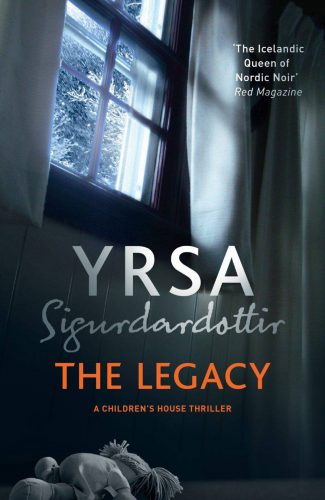
It’s the middle of the night and there’s a shadow looming over the bed.
Of course, it’s only Margret, a child who suffers nightmares, come to inform her mother there’s a man in the house. A bad man, because who else would be there at this time of night? Elisa drags herself out of bed and sets off to prove her daughter wrong.
Unfortunately, Margret is correct…
What’s it about?
Detective Huldar is out of his depth. His first murder case is like nothing he’s seen before – a bizarre attack on a seemingly blameless woman.
The only evidence is a list of numbers found at the scene, and the testimony of the victim’s eleven-year-old daughter, who isn’t talking.
While his team attempt to crack the code, Huldar turns to child psychologist Freyja for her expertise with traumatised young people.
Because time is running out…and the one thing they know for certain is that the murderer will strike again.
What’s it like?
Dark. Well structured. Engaging throughout.
Sigurdardottir takes readers deep into the minds of her characters as they are attacked by her villain; it is a tribute to her skill as a writer that such reflections are engaging rather than simply disturbing, and although her characters are tortured, you couldn’t describe this book as torture-porn; there are no lingering descriptions of blood or gore, just some horrifying deaths!
The prologue immediately creates a sense of mystery around three young siblings, whose experiences have been so dreadful that the adults deciding their fate can only allude to the horrors briefly. The decision is taken to separate them for adoption and hide their background from them. It seems the best decision, made with the best intentions, but we all know that the road to hell is paved with good intentions…
‘People who behave irrationally are far more dangerous than those who abide by conventional rules.’
Sigudardottir then throws the reader straight into Elisa’s traumatic experience and from then on, despite the slow pace of the introduction to various characters, the story never ceases to grip the reader. What did Margret witness? Can she be prevailed upon to share the horrors she heard? The scenes involving Margret and Freyja / Silja were some of my favourite in the book, the adults (trying to!) carefully push Margret just the right degree to prevent her shutting down completely.
Gradually, I became aware of the villain’s intentions with one key character – but I was completely astonished by the revelation of the villain. It fit – but the motives were not what I expected at all. In fact, they were the only element of the story that I just didn’t believe.
The ending developed just as cleverly as the beginning. Huldar cannot quite bring himself to sign off on this case and, in the end, logical deductions arising from basic police work pay off. The epilogue closes the story perfectly, showing us the future trajectory of the most vulnerable characters and giving them the closure they need.
How old is Margret?
This is a really minor niggle, BUT the trouble with really minor irritations is that they do still irritate – they pull at you like a loose thread on a much loved jumper.
Every review I spot online refers to Margret as a seven year old girl but I’m certain that one passage in the book refers to her as being nine years old, and the blurb on my edition refers to her as eleven years old.
Like I said. It’s a REALLY minor niggle. But. There’s a lot of growing up that happens between seven and eleven. Given the multiple references to Margret as being seven years old online, I suspect the blurb on the Hodder edition may be an error.
Final thoughts
This is a beautifully constructed story, but it feels wonderfully unpredictable as you read. You know that the prologue must turn out to be highly relevant, but it’s not at all clear how until the last few chapters when everything ties together perfectly (except for the villain’s motives, which still felt unconvincing). I now understand why Yrsa Sigurdardottir is referred to as the Queen of Icelandic Crime!
The deeply intriguing prologue and satisfying epilogue bookended a gripping story that kept me fascinated throughout. I’ll definitely be looking to read the next in Sigurdardottir’s ‘Children’s House’ series, ‘The Reckoning’, which also features Freyja and Huldar.